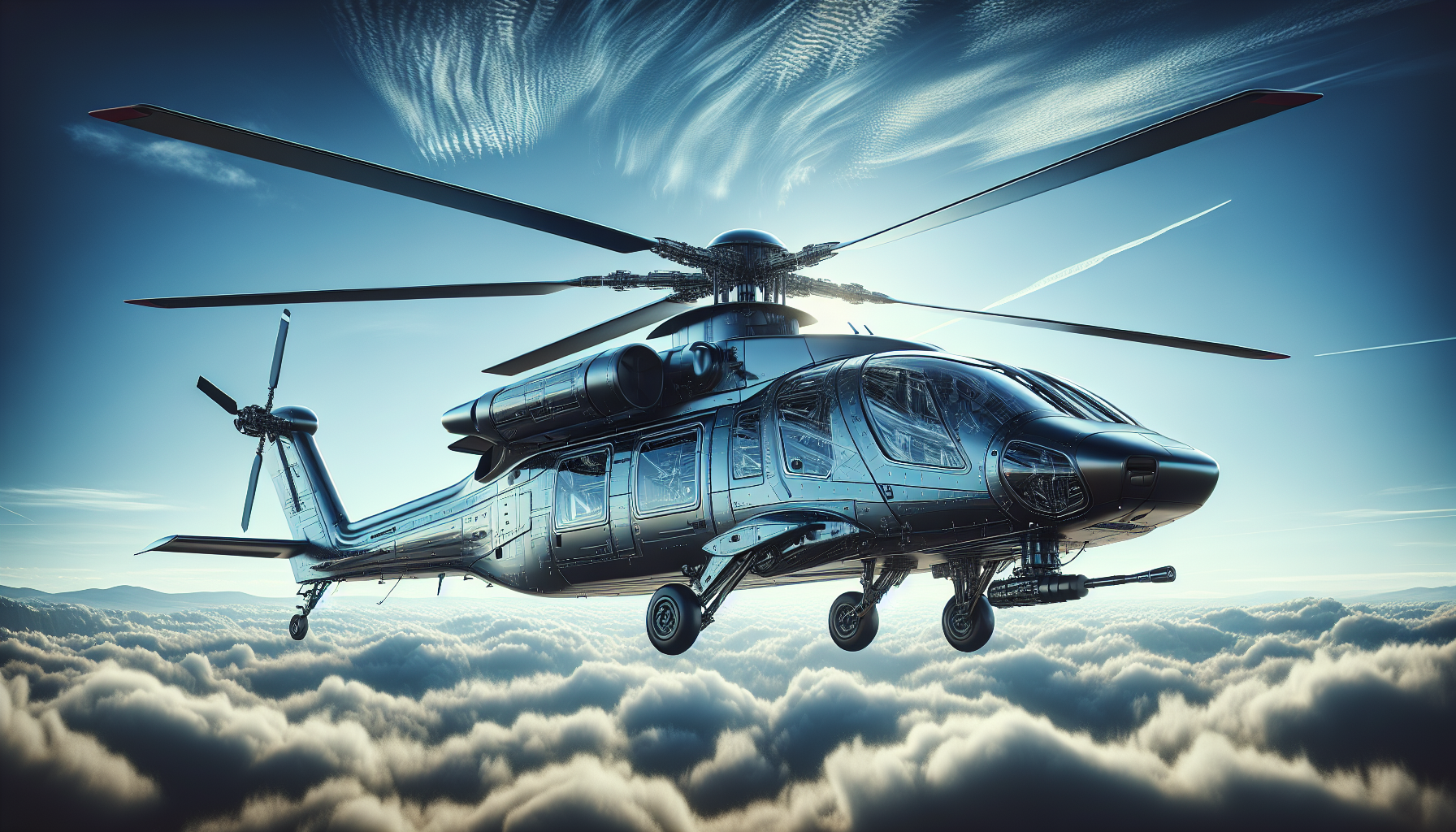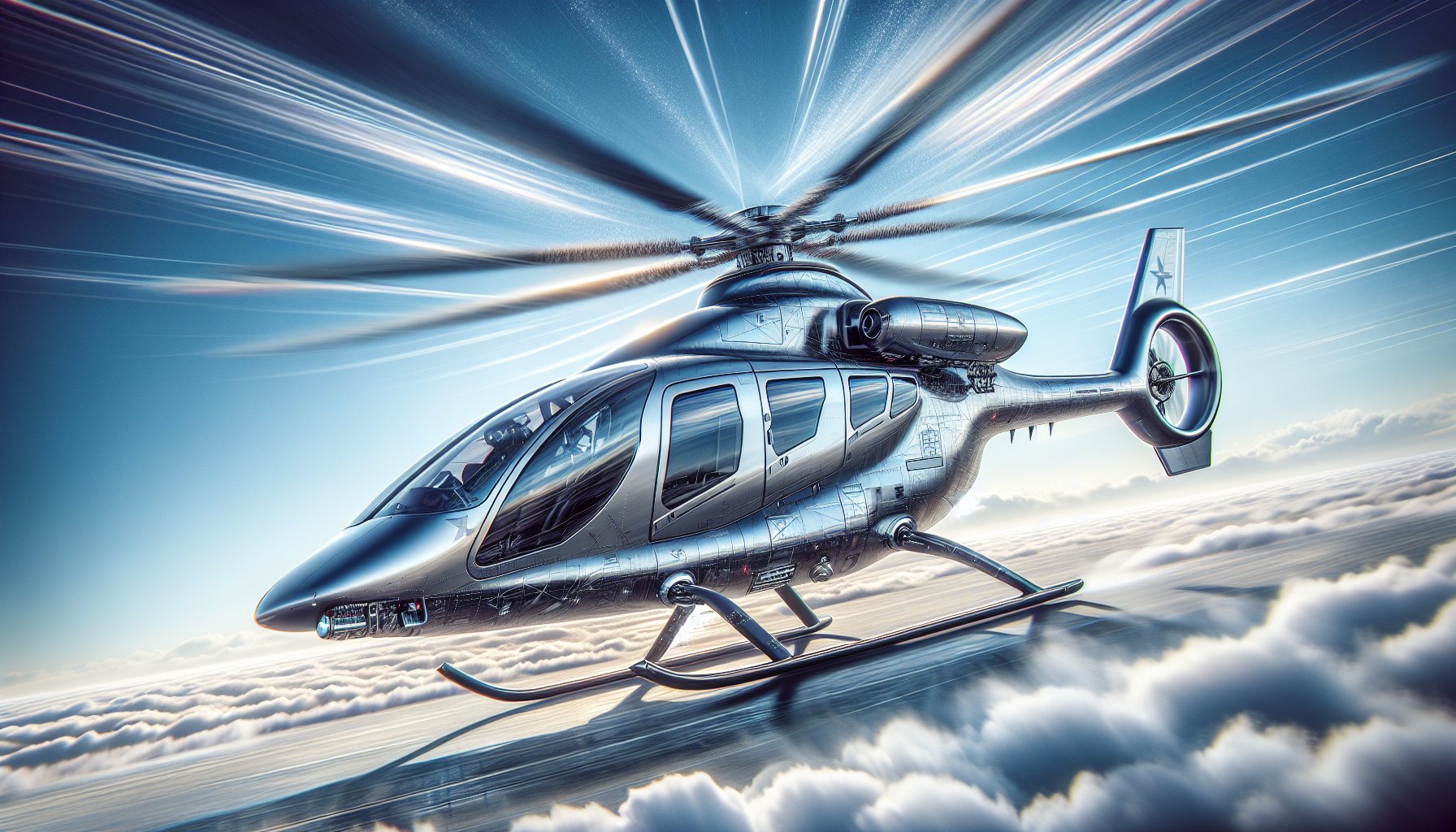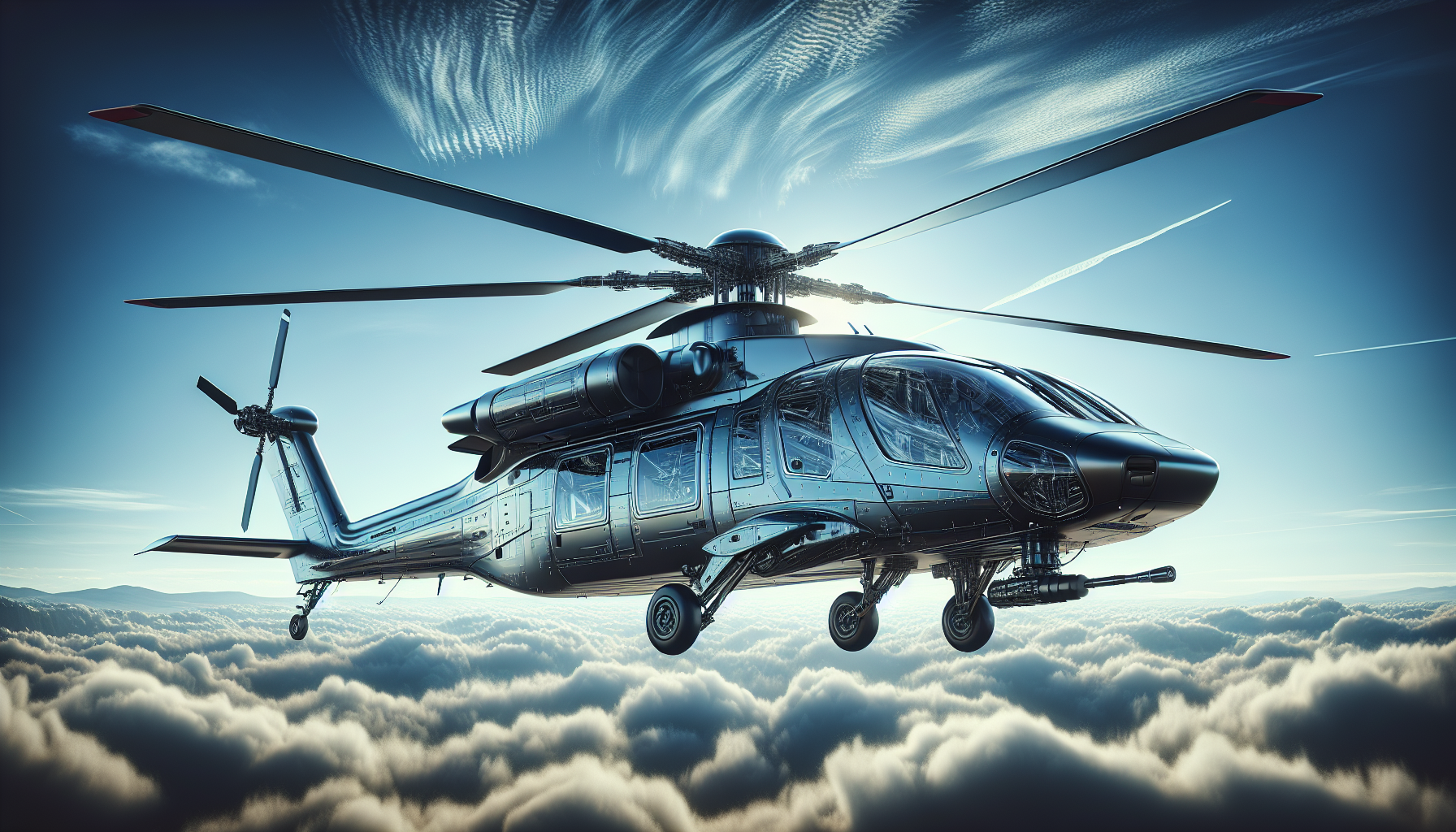The recent unveiling of the S-70UAS U-Hawk by Lockheed Martin marks a pivotal moment in the evolution of helicopter technology. This innovative aircraft, showcased at the AUSA conference in October 2025, features a revolutionary design that replaces the traditional cockpit with advanced clamshell doors and a robotic pilot. With capabilities that include autonomous flight over 1,600 nautical miles and cargo transport of up to 9,000 pounds externally, the U-Hawk signifies a profound shift in modern airpower and operational efficiency.
The implications of the U-Hawk extend beyond its impressive specifications, particularly with the integration of MATRIX autonomous flight software. This advancement opens the door to the potential transformation of various other helicopters, such as the Apache and Viper, into unmanned aerial systems. The article will explore these groundbreaking developments, the operational capabilities of the U-Hawk, and speculate on its impact on the future of military aviation.

The Evolution of Helicopter Technology
Historical Advancements from the Black Hawk
The helicopter, a marvel of engineering, has evolved significantly since its inception. The Sikorsky UH-60 Black Hawk, introduced in the late 1970s, stands as a pivotal milestone within this evolution. Designed primarily for utility missions, the Black Hawk served not only as a tactical troop transport but also as a platform for medical evacuation and command and control missions. Its design marked a shift towards multi-role utility helicopters, which, due to their versatility, became indispensable in both military and civilian applications. The advancements in rotor dynamics, avionics, and materials science that accompanied the development of the Black Hawk paved the way for future innovations, including those seen in the latest generations of rotary-wing aircraft like the U-Hawk.
Key Technological Milestones in Rotary Flight
Technological milestones in rotary flight can be delineated into several critical advancements since the time of the Black Hawk. First, the integration of advanced composite materials revolutionized airframe construction, leading to lighter and stronger helicopters. Secondly, the introduction of fly-by-wire systems enhanced flight control, providing pilots with improved handling characteristics and reduced workload. Moreover, advancements in avionics, including real-time data processing and GPS navigation, transformed operational capabilities across various mission profiles. Each of these milestones played a critical role in shaping rotary flight as we know it today, creating a foundation for further innovations designed to enhance performance, safety, and versatility in helicopters.
Introducing the U-Hawk
Overview of the S-70UAS U-Hawk
The S-70UAS U-Hawk represents a significant leap in helicopter technology, transitioning from traditional piloted systems to autonomous capabilities. Unveiled by Lockheed Martin at the AUSA conference in October 2025, the U-Hawk is characterized by its transformation of the venerable Black Hawk into an uncrewed aerial system. This engineering feat involves stripping away the traditional cockpit and integrating state-of-the-art automation technologies, all while retaining the core features that made the Black Hawk a mainstay in military aviation. The U-Hawk’s design not only honors its predecessor but also reimagines its operational potential, showcasing the future of rotary wing flight.
Key Features and Specifications
The U-Hawk boasts impressive specifications that underscore its functionality and versatility. Capable of flying autonomously for 1,600 nautical miles, it serves an exceptional operational range that is critical for long-duration missions. Additionally, it can transport up to 7,000 pounds of cargo internally and 9,000 pounds externally. This capacity significantly enhances its utility across various missions, from logistics to combat support. Furthermore, the incorporation of innovative MATRIX autonomous flight software enables the U-Hawk to navigate complex environments without human intervention, marking a pivotal transition in the operational profile of military helicopters.
Innovative Design Changes
Transforming the Cockpit into an Uncrewed System
One of the most striking transformations realized in the U-Hawk is the complete removal of the traditional cockpit and the introduction of clamshell doors. This design alteration is not merely aesthetic but fundamentally alters the helicopter’s operational framework. By eliminating the need for a human pilot, the U-Hawk can be engineered to optimize interior space for additional cargo or systems, reflecting a new paradigm in helicopter design. This strategic deviation underscores a shift toward optimizing functionality over traditional design constraints.
The Significance of Clamshell Doors in Design
The adoption of clamshell doors is a notable design enhancement that illustrates the U-Hawk’s innovation. These doors facilitate rapid loading and unloading of cargo, ensuring efficiency throughout various operational scenarios. Moreover, their design allows for versatile airframe configurations, enabling the U-Hawk to serve dual roles in both transport and combat applications. This significant improvement not only enhances operational readiness but also streamlines logistical processes, making the U-Hawk an invaluable asset in military operations.
Autonomous Flight Capabilities
Utilization of MATRIX Autonomous Flight Software
At the heart of the U-Hawk’s operational efficacy lies the MATRIX autonomous flight software, an advanced system designed to manage flight dynamics and mission planning. By leveraging artificial intelligence and machine learning algorithms, MATRIX allows for real-time decision-making, enabling the U-Hawk to adapt to changing environments and mission requirements autonomously. This capability not only minimizes the risk associated with human error but also enhances the precision and effectiveness of missions.
Comparison with Traditional Piloted Helicopters
When compared to traditional piloted helicopters, the U-Hawk’s autonomous capabilities highlight a crucial differentiation in operational execution. Traditional helicopters rely heavily on human pilots, who, despite their training, may face limitations under pressure. The U-Hawk, in contrast, operates without the constraints of human endurance, conducting missions in high-risk environments with improved safety margins. This comparison elucidates how autonomy is set to redefine the operational landscape, emphasizing reliability and predictability in rotary-wing flight.

Cargo Capacity and Operational Range
Capabilities of Hauling Cargo Inside and Outside
The U-Hawk’s cargo capabilities represent a significant advancement over its predecessors. With the ability to haul up to 7,000 pounds internally and 9,000 pounds externally, it is well-suited for diverse logistical demands. Whether transporting supplies, performing medical evacuations, or delivering equipment to the frontline, the U-Hawk can achieve a level of versatility previously unattainable in unmanned systems, enabling military forces to conduct operations with greater efficiency and support.
Impact of 1,600 Nautical Miles Range on Missions
The U-Hawk’s operational range of 1,600 nautical miles expands its mission parameters significantly. This extended range allows for operations that were once constrained by the limits of human endurance and refueling requirements. In practical terms, it means the U-Hawk can conduct long-range reconnaissance, sustain operations further from base stations, or support troops in more remote engagements without the need for constant human oversight. As a result, this extended range drastically alters operational planning, enabling more agile and responsive military strategies.
Implications for Military Operations
Enhanced Logistics and Support Capabilities
The introduction of the U-Hawk into military operations holds profound implications for logistics and support. With its autonomous capabilities and substantial cargo capacity, the U-Hawk can streamline the distribution of supplies, equipment, and medical staff in challenging terrains or during combat scenarios. By utilizing uncrewed systems to support logistics, militaries can reposition human resources towards more critical roles, ensuring that operations are conducted more efficiently.
Potential Impact on Troop Safety and Operational Efficiency
The U-Hawk’s ability to undertake missions remotely translates directly into enhanced troop safety. By minimizing human exposure to high-risk environments, the U-Hawk can execute tasks that would otherwise expose pilots to danger. Additionally, operational efficiency improves as the U-Hawk can operate continuously, unaffected by crew fatigue. This strategic advantage not only preserves human life but also maximizes the effectiveness of military operations in diverse theaters of engagement.

Future Prospects for Uncrewed Helicopters
Potential Candidates for Unmanned Conversions
The innovation seen in the U-Hawk is expected to set a precedent for converting additional helicopter models into unmanned systems. The Apache, Venom, Viper, and Sea Stallion are among the candidates that could benefit from similar advancements in automation. As military forces recognize the advantages of uncrewed flight, the potential to enhance these platforms through autonomous systems will likely become a focal point in future aviation developments.
The Role of Drones in Military and Commercial Aviation
Looking ahead, the role of drones—both in military and commercial contexts—will continue to evolve. The trend toward automation suggests that uncrewed systems will become integral not only on the battlefield but also in logistics, surveillance, and various civilian applications. This evolution aligns with a larger movement towards smart technologies, prompting considerations about regulations, security, and ethical implications in their deployment.
Technological Challenges and Solutions
Addressing Cybersecurity Concerns in Autonomous Systems
As the reliance on autonomous systems like the U-Hawk increases, so too do cybersecurity concerns. The potential for cyber-attacks poses significant threats to the integrity of these platforms. To mitigate such risks, developers must prioritize robust cybersecurity protocols that ensure the integrity and reliability of autonomous systems. This includes continuous monitoring, updating software, and establishing fail-safes that protect against unauthorized access or interference.
Reliability and Redundancy in Uncrewed Operations
Another challenge facing uncrewed helicopters lies in ensuring reliable operation under various conditions. Reliability is paramount to maintain mission success and mitigate risks inherent in automation. Incorporating redundancy into critical systems, such as navigation and propulsion, is fundamental to safeguarding against failures. By adopting stringent testing standards and implementing backup systems, the operational resilience of uncrewed helicopters like the U-Hawk can be significantly enhanced.
Public Perception and Acceptance
Societal Views on Autonomous Military Technology
The introduction of autonomous military technology, such as the U-Hawk, evokes mixed responses from the public. While there is recognition of its potential benefits—namely, increased safety and operational efficiency—there are also apprehensions about ethical implications and the potential for misuse. Engaging with the public and addressing concerns transparently is essential to foster acceptance and understanding of these advancements in military technology.
Expectations versus Reality in Drone Utilization
Public expectations of drone technology often fluctuate based on prevalent narratives and media representations. While many envision a future characterized by seamless integration of drones into society, the technological realities often differ. The challenges of ensuring safety and efficacy, along with the practical limitations of current systems, create a gap between expectation and reality. It is imperative for stakeholders in the aerospace and defense industries to address these discrepancies, educating the public about the complexities involved in deploying autonomous systems.
Conclusion
Recap of U-Hawk’s Significance in Aviation History
In summation, the unveiling of the U-Hawk marks a significant chapter in aviation history, setting a precedent for the future of helicopter technology. It not only enhances operational capabilities but also redefines traditional notions of military logistics and airborne support. The integration of advanced technologies signifies a forward-thinking approach in a rapidly evolving landscape.
The Future Landscape of Helicopter Technology and Its Implications
As we look ahead, it is evident that the evolution of helicopter technology, exemplified by the U-Hawk, is bound to reshape both military and commercial aviation. The potential for further uncrewed conversions, combined with the challenges inherent in autonomous systems, will continue to drive innovation. With robust security measures and public engagement, the future landscape promises to enhance efficiency and effectiveness in aviation, signifying a new era in rotary-wing flight.
